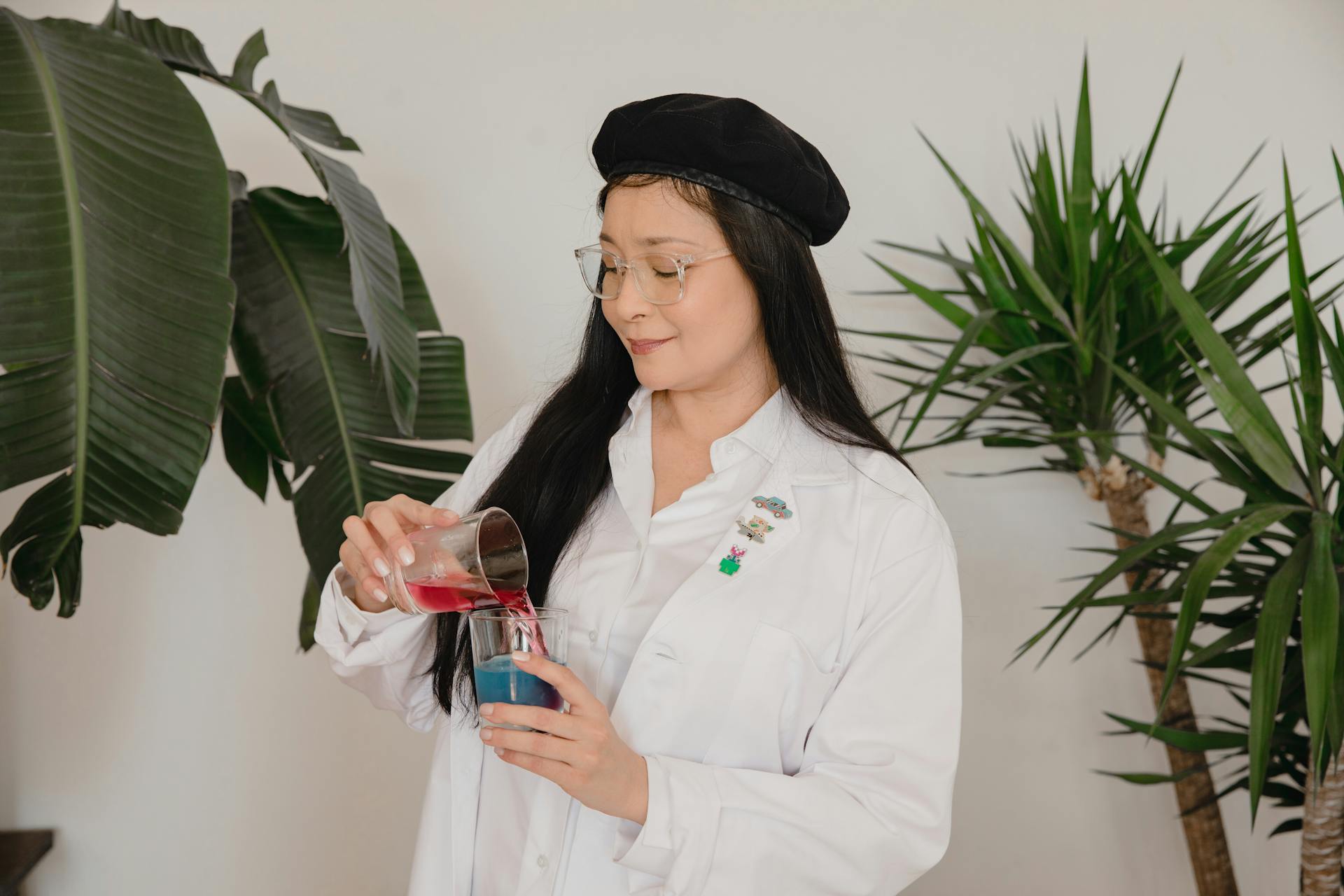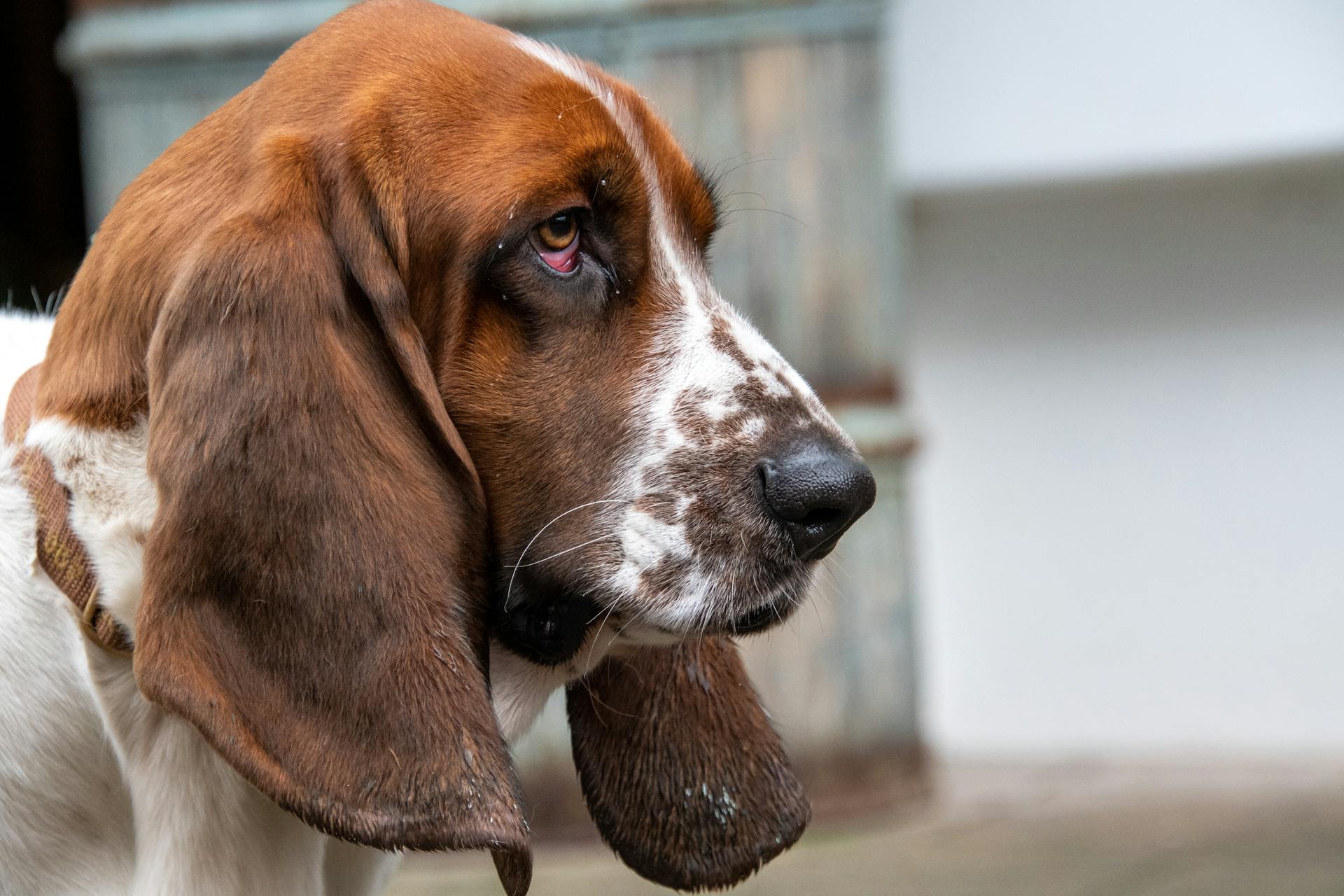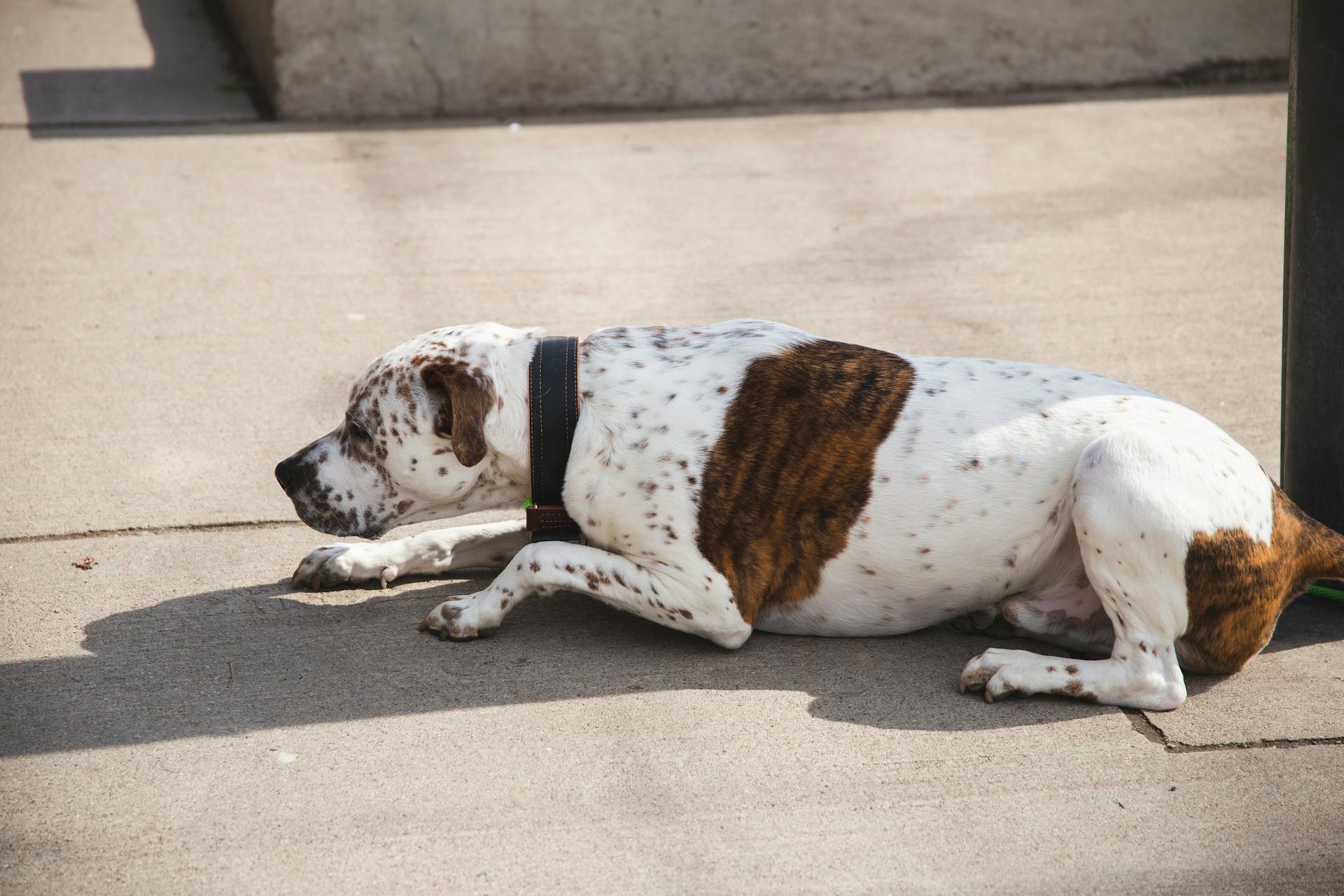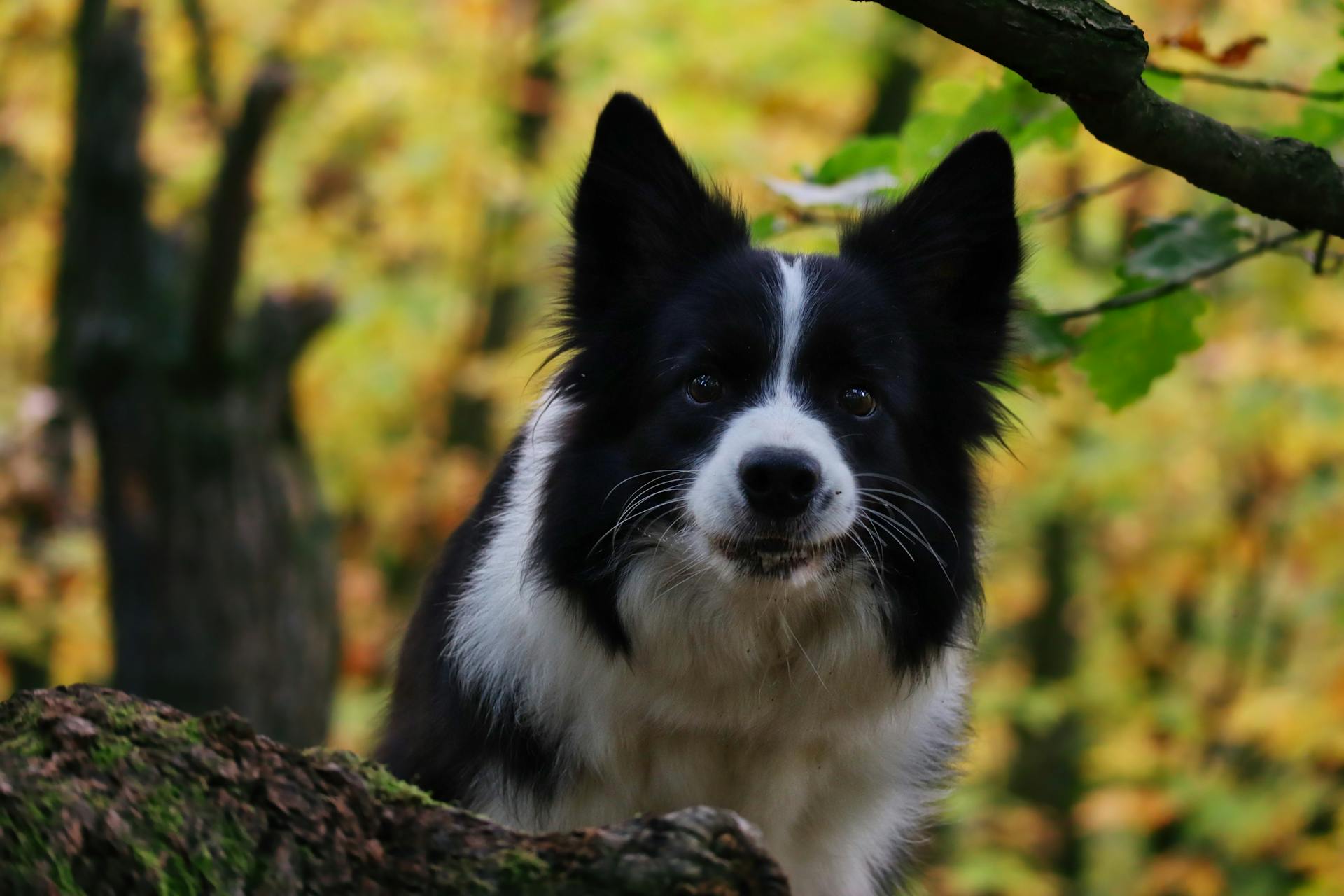
If you're considering bringing a Lab Hound Mix into your family, you're in for a treat. These energetic and affectionate dogs make great companions for active families or individuals.
Lab Hound Mixes are a cross between a Labrador Retriever and a Basset Hound, resulting in a unique blend of characteristics. They can inherit the friendly and outgoing nature of Labradors or the calm and gentle demeanor of Basset Hounds.
Their short coats require minimal grooming, but they do need regular exercise to stay happy and healthy. A daily walk or playtime is essential to keep them physically and mentally stimulated.
A well-balanced diet is also crucial to maintain their overall health, and they can thrive on high-quality dog food.
Origin and History
The Lab Hound Mix has a fascinating history that's worth exploring.
Labrador Retrievers originated from hunting stock in Newfoundland, Canada, where they helped fishermen with their labor-intensive daily routines.
Their intelligence, eagerness to please, and friendly nature made them a popular breed for household pets in the United States.
Mixing Labrador Retrievers with hounds became a popular practice in the late 1980s and early 1990s, following the success of the Labradoodle.
A Labrador Hound Mix is created whenever a Labrador is bred with a hound breed, resulting in a unique combination of characteristics.
The history of the second parent dog used will depend on the hound breed used, but a hunting background is a common denominator among hounds.
Labrador Retrievers have been popular in roles such as disability support due to their intelligence and friendly nature, making them an excellent breed for many families.
The popularity of Lab Hound Mixes grew as breeders started mixing Labradors with various breeds, including Basset Hounds, often called Basadors.
What to Expect
You can expect a Lab Hound mix to be very different from the next, as they can inherit traits from either parent. Each mix is unique.
A mixed breed dog can inherit any traits from either parent, so a puppy could be more like its Lab parent or much more like its hound parent. This means it's essential to look at the parents to get a better idea of what your Labrador hound mix will be like.
The name of your Lab Hound mix can give you a hint about its hound parent, such as Labbe (Labrador Retriever and Beagle mix), Bassador (Labrador Retriever and Basset Hound mix), or Dachsador (Labrador Retriever and Dachshund mix).
Appearance and Characteristics
Lab hound mixes can vary greatly in size depending on the type of hound giving their DNA to the mix. They can weigh anywhere from 55 to 120 pounds and reach heights of 21.5 to 28 inches tall.
Their coats can be a blend of their parent breeds, with some inheriting the short and thick coat of the Labrador, while others may have a single short coat like the hound parent. This means they might shed a lot year-round like Labradors, or only seasonally like hounds.
They often have the face of a Labrador retriever mixed with the long ears of a scent hound, and might have more skin than usual and look a bit droopy like their bloodhound or Basset hound parent. But if the dog is part greyhound, you can expect them to have a more pointy face with no excess skin.
A Bloodhound Lab mix is likely to have a short and dense coat, a long and slightly curved tail, and possibly wrinkled and drooping excess skin on their face.
For your interest: Female Bloodhound Dog Names
Appearance
Lab hound mixes can vary greatly in size depending on the type of hound giving their DNA to the mix. Labradors are medium-to-large dogs measuring 21.5 to 22.5 inches tall and weighing between 55 and 80 pounds.
They can range from being very short and stocky, like a Basset hound, to being quite tall and large, like a Bloodhound. Alternatively, if the hound parent is a greyhound, you can expect a tall dog with a slender body.
Lab hound mixes usually have the face of a Labrador retriever mixed with the long ears of a scent hound. Most breeds of scent hounds have long ears to trap smells for tracking.
Their coats can be a single short coat, like a hound, or a double coat that's short but thick, like a Labrador retriever. This means they might shed a lot year-round, like a Labrador, or only seasonally, like a hound.
For another approach, see: Scent Hound
Lab hound pups will often inherit the full-colored coat of their Lab parent, which could be black, chocolate, or yellow. But if their hound parent has a patterned coat, like the tri-color coats common among Basset hounds, their mixed-breed pups can have the same color or pattern.
The Labloodhound, a cross between a Labrador Retriever and a Bloodhound, is likely to be a large dog weighing more than 100 pounds with a deep chest and powerful shoulders.
Characteristics
Labrador retriever hound mixes can be quite energetic, especially those with a strong scent hound heritage, so be prepared for regular exercise and outings.
Labrador retrievers are known for their friendly, outgoing personalities, which they tend to pass on to their offspring.
Lab mixes can be prone to destructive behaviors if left alone for too long, so it's essential to provide them with plenty of interaction and mental stimulation.
Their friendly nature also means they can be a bit too trusting, so you may want to consider additional training to help them become more discerning watchdogs.
Basset Hound Lab mixes are generally easy to train, requiring less physical stimulation than some other scent hound breeds.
These dogs are also known to be relatively quiet, which is a bonus for those who live in apartments or have noise restrictions.
Their coats require regular grooming, but they shed seasonally, making it a relatively low-maintenance aspect of their care.
Bloodhounds, one of the parent breeds of the Labloodhound, are notorious for being stubborn during training, so be prepared to use positive reinforcement techniques.
You might like: Brown Lab Mix
Bassador Shedding
The Bassador sheds a lot, thanks to its thick coat inherited from its Basset Hound and Labrador parents. Both of these breeds are known to be heavy shedders, so be prepared for regular grooming.
Expect to brush your Bassador daily to control the shedding and keep your furniture hair-free.
Similarly Sized
If you're looking for dog breeds that are similar in size to the Labloodhound, you've come to the right place. The Labloodhound is a medium-sized breed, and there are several other breeds that share similar dimensions.
One such breed is the Sarplaninac, which is 97% similar in size to the Labloodhound. This robust and agile breed is known for its distinctive appearance and impressive build.
The White Shepherd is another breed that shares a similar size profile, with a 97% similarity to the Labloodhound. This breed is renowned for its intelligence, athleticism, and striking appearance.
The Uruguayan Cimarron and Kugsha breeds also share a similar size profile, with 96% similarities to the Labloodhound. These breeds are known for their rugged beauty and impressive physical abilities.
Here are some breeds that are similarly sized to the Labloodhound:
- Sarplaninac (97% similar)
- White Shepherd (97% similar)
- Uruguayan Cimarron (96% similar)
- Kugsha (96% similar)
Socialization and Training
Socialization is key for Lab hound mixes, as it helps them grow into happy, confident, and friendly adult dogs. Proper socialization as a puppy minimizes aggression towards people and other animals, particularly fear-based aggression.
Socialization should start early, ideally before they are 12 weeks old, and expose them to as many new things, people, and places as possible. Even friendly breeds like Labradors need socialization to ensure they grow into well-adjusted adult dogs.
To overcome their stubborn streak, Lab hound mixes need firm and consistent training starting from a young age, ideally when they are 8 weeks old. This will help them respond better to training and overcome their prey drive if you plan to have them live in peace with smaller pets.
Lab hound mixes are generally amiable and can get along well with other pets, but it's essential to introduce them slowly and carefully, especially with smaller animals like cats. They have a strong prey drive, so monitoring and training are crucial to ensure a harmonious household.
Here are some key socialization and training tips for Lab hound mixes:
- Socialize your Lab hound mix puppy before they are 12 weeks old.
- Start training early, ideally from 8 weeks old, to overcome their stubborn streak.
- Expose them to new things, people, and places to minimize aggression.
- Introduce them slowly and carefully to other pets, especially smaller animals.
Socialization
Socialization is a crucial aspect of raising a well-adjusted and confident dog. Proper socialization as a puppy helps to ensure adult dogs grow to be happy, confident, and friendly.
Socialization is especially important for mixed breeds, like Lab Hound mixes, as they can inherit traits from both parent breeds. The Labrador parent breed is known for being friendly, but it still needs to be socialized, and the same goes for the Bloodhound parent breed.
To socialize your Lab Hound mix well, expose them to as many new things, people, and places as possible before they are 12 weeks old. This will help minimize aggression towards people and other animals, particularly fear-based aggression.
Lab Hound mixes are known for their friendly nature, but they can have different levels of patience around children, strangers, or other animals. Socialization from an early age can help them be more comfortable and less fearful or aggressive around others.
Here are some tips for socializing your Lab Hound mix:
- Expose them to new people, places, and things
- Socialize them with other dogs and animals
- Gradually introduce them to new environments and situations
By following these tips, you can help your Lab Hound mix become a well-adjusted and confident companion.
Blood Puppies
Finding the right breeder for Bloodhound Lab mix puppies is crucial for their socialization and training. Ensure the breeder is legit and only breeding with healthy canines.
Don't be afraid to ask for proof of health tests and meet the mother and both parents if possible. This will give you peace of mind that the puppies come from a trustworthy source and will likely be healthy.
Reputable breeders prioritize the well-being of their dogs and puppies, treating them like members of their own family.
Health and Maintenance
Lab hound mixes can live for around 11 to 13 years. They are prone to hip and elbow dysplasia, which can cause serious pain and mobility issues as they get older.
To prevent hip and elbow dysplasia, it's essential to feed and exercise them properly while they're growing. This includes providing good quality food with lots of animal-based protein and not over-exercising them. A general rule of thumb is to limit exercise to 5 minutes per day for every month of age.
Regular ear cleaning is also crucial to prevent ear infections and hearing problems. Both Lab and hound mixes tend to overeat, so strict mealtimes with the right caloric proportions are necessary to prevent obesity and bloat. Here's a quick rundown of common health issues to watch out for:
Health and Conditions
Lab hound mixes, like many other breeds, can be prone to certain health issues. Their lifespan is typically shorter than purebred Labs, ranging from 11 to 13 years.
Hip and elbow dysplasia are common problems in larger Lab hound mixes, causing joint pain and mobility issues as they age. Regular exercise and a balanced diet can help prevent this condition.
Vision problems are also a concern, with many Lab hound mixes losing some of their sight as they age. Regular ear cleaning is crucial to prevent ear infections and hearing problems.
Lab hound mixes tend to overeat and develop obesity if their diet is not strictly controlled. Never leave food out for them to graze, and maintain strict mealtimes with the right caloric proportions.
Here are some common health issues that can affect Lab hound mixes:
- Thyroid disorders
- Eye problems
- Progressive retinal atrophy (PRA)
- Luxating patella
- Ear infections
- Arthritis
- Cardiac problems
- Gastric dilatation-volvulus (GDV), or bloat
- Hip dysplasia
- Elbow dysplasia
By being aware of these potential health issues and taking preventative measures, you can help ensure your Lab hound mix lives a long and happy life.
Grooming
Grooming is an essential part of keeping your Labloodhound in optimal condition. Regular grooming can help prevent skin problems and ear infections, which are common issues in this breed.
Labloodhounds have dense coats that don't shed much, but they do need occasional brushing to prevent matting and tangles. Daily brushing is recommended for the Bassador, but for Labloodhounds, occasional brushing will do.
Cleaning the folds in your Labloodhound's skin regularly is crucial to prevent skin problems. This is especially important for breeds prone to skin issues.
Checking your Labloodhound's ears regularly is vital to prevent dirt and bacteria from accumulating and causing infections. Both parent breeds are prone to ear infections, so it's essential to stay on top of ear care.
Labloodhounds are likely to chew a lot, so regular dental care is a must to prevent cracked teeth. Brushing their teeth regularly will help keep them healthy and prevent any potential dental issues.
Keeping your Labloodhound's nails trimmed is also essential to prevent overgrowth and potential paw-related issues.
Bassador Ownership Essentials
Owning a Bassador is a big commitment, so it's essential to do your homework before bringing one home.
You should be aware of the feeding requirements of your Bassador, which will likely be different from your current pet or what you're used to.
A loving family and some fun outdoor activities will make your Bassador the happiest dog around.
They may need a little time to warm up to new people, so be patient and give them space to adjust.
Owning a Bassador for their entire lifetime means you'll need to consider their health requirements, which will likely include regular check-ups and potential health issues.
With proper care and attention, your Bassador will thrive and become a beloved member of your family.
Breed-Specific Information
The Bloodhound Lab mix, also known as a Labloodhound, can grow up to 30 inches tall and weigh over 100 pounds.
This sturdy heavyweight dog has a lifespan of approximately 9 years, making him a long-term companion.
He's relatively easy to train, which is great news for new dog owners.
His temperament is friendly and loving, similar to that of a purebred Labrador Retriever.
Beagle
Beagles are scent hounds that originated in Ancient Greece.
Their short, heavy fur comes in colors including black, tan, red, and white, with blue ticking a possibility.
Beagles typically range from almost 20 pounds up to around 70 pounds.
They usually average one to two feet in height.
A lifespan of 10 to 15 years is common for Beagles.
Beagles are prone to hypothyroidism and epilepsy.
Disc issues are also a common problem for Beagles.
Some Beagles develop a condition called "Funny Puppy", where they develop at a slower than normal rate and can end up with a curved back and weakened legs.
Regular brushing is necessary to maintain their coats, which can shed on a seasonal basis.
Dachshund
Dachshunds are small breeds that originated in Germany, where they were used to hunt underground game.
Their slender bodies and short legs made them well-suited for this task, but today they're mainly known as affectionate and loyal companions.
Dachshunds are a bit vocal due to their hound ancestry.
Their lifespan averages from 12 to 16 years.
They come in three coat varieties: smooth, wirehaired, and longhaired, and require regular brushing.
Dachshunds are low-lying dogs, with standard-sized canines averaging 8 to 9 inches in height and 15 to 30 pounds in weight.
Miniature Dachshunds are around 5 to 6 inches tall and weigh about 10 pounds or under.
Back problems are a common health issue in Dachshunds, with over a quarter of the breed suffering from back issues between the ages of 5 and 9 years old.
They should be picked up with two hands beneath the body to avoid putting pressure on their back, and children should be cautioned against rough play.
Epilepsy and blindness are other major health concerns with this breed.
Blue Tick Coon
The Blue Tick Coon is a unique and loving companion. It's a mix of the Blue Tick Hound and the Lab, resulting in a beautiful blue and white ticked coat with tan coloring mixed in.
They're known for their affectionate nature and loyalty to their family. They make great family pets, but they do require attention and socialization from an early age.
This breed is highly intelligent and picks up new skills quickly, making training a breeze. With patience and consistency, you can teach them anything.
Their short, glossy coat sheds moderately throughout the year, so it's not the best choice for people with allergies. Regular grooming can help reduce shedding, but it's still a good idea to consider this before bringing one home.
With strong prey drives, Blue Tick Coons need plenty of exercise to keep them happy and healthy. If they don't get enough physical and mental stimulation, they can become destructive and bored.
3 Little-Known Facts About Blood
Blood is a fascinating liquid that plays a vital role in our bodies, and here are three little-known facts about it.
Red blood cells have a unique property that allows them to stretch up to 20% of their original size to accommodate the body's needs for oxygen.
The average person has around 5 liters of blood circulating through their veins at any given time.
The lifespan of a red blood cell is approximately 120 days, after which it is broken down and recycled by the spleen.
Frequently Asked Questions
How big will a lab bloodhound mix get?
A lab bloodhound mix typically grows to be between 22-27 inches tall and weighs 60-110 pounds, making them a sturdy and athletic breed. Their size can vary, but they're generally a medium to large-sized dog.
What is the temperament of a hound mix?
Hound mixes are lively and energetic dogs with unpredictable daily routines. They may not be suitable for households with small pets due to their hunting instincts.
What is a Lab Bloodhound mix called?
A Lab Bloodhound mix is commonly referred to as a Bloodhound Lab mix or Labloodhound. This unique breed combination is worth learning more about to discover its characteristics and needs.
What is the best crossbreed for a Labrador?
There is no single "best" crossbreed for a Labrador, as the suitability of a mix depends on individual preferences and needs. However, popular crossbreeds like the Aussiedor and Labradane offer unique characteristics that may make them a great fit for some families.
Is a labrabull a good dog?
A Labrabull can make a wonderful family pet, but they require consistent training and socialization to reach their full potential. With proper care, they can be loving, playful, and loyal companions.
Featured Images: pexels.com


